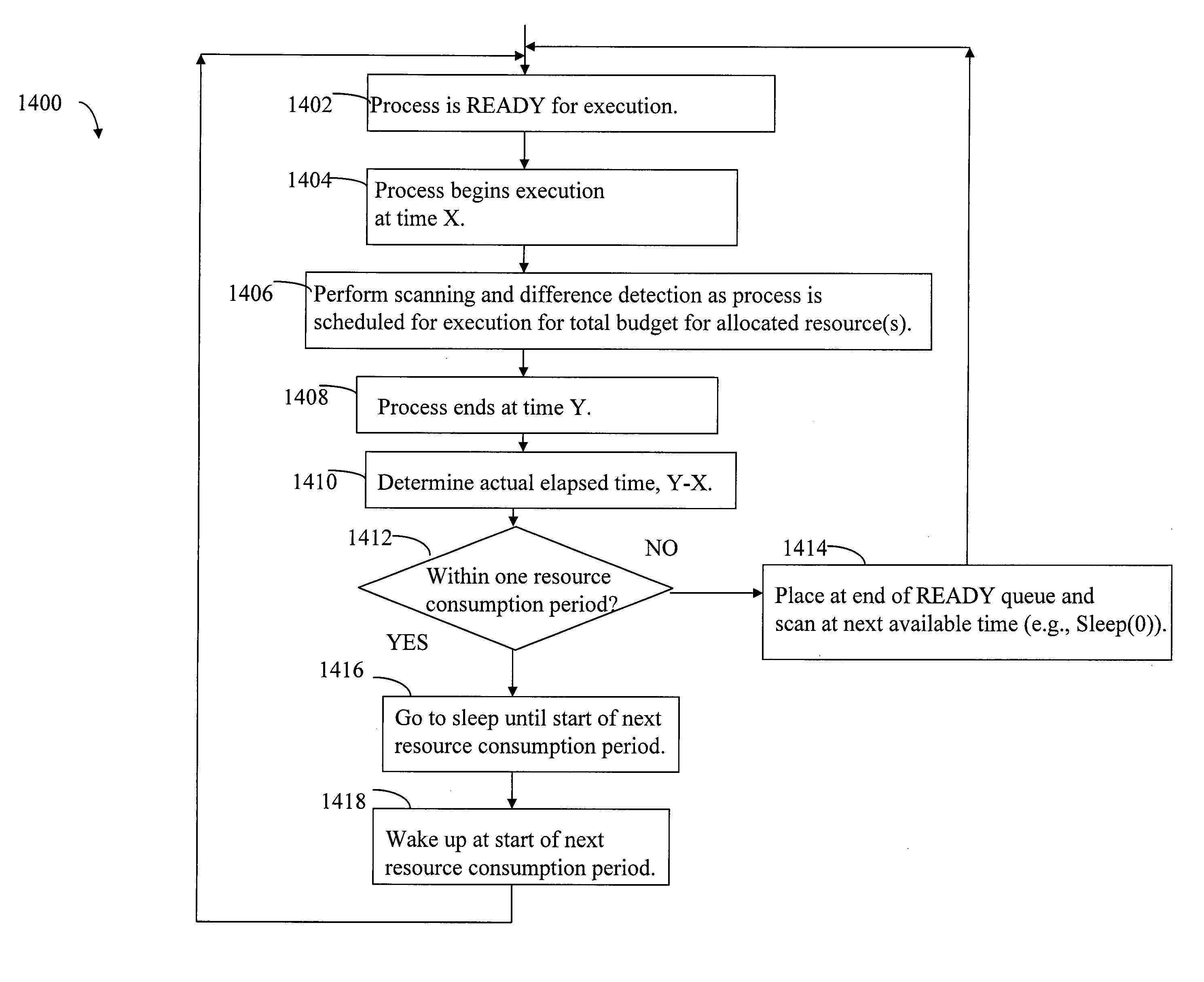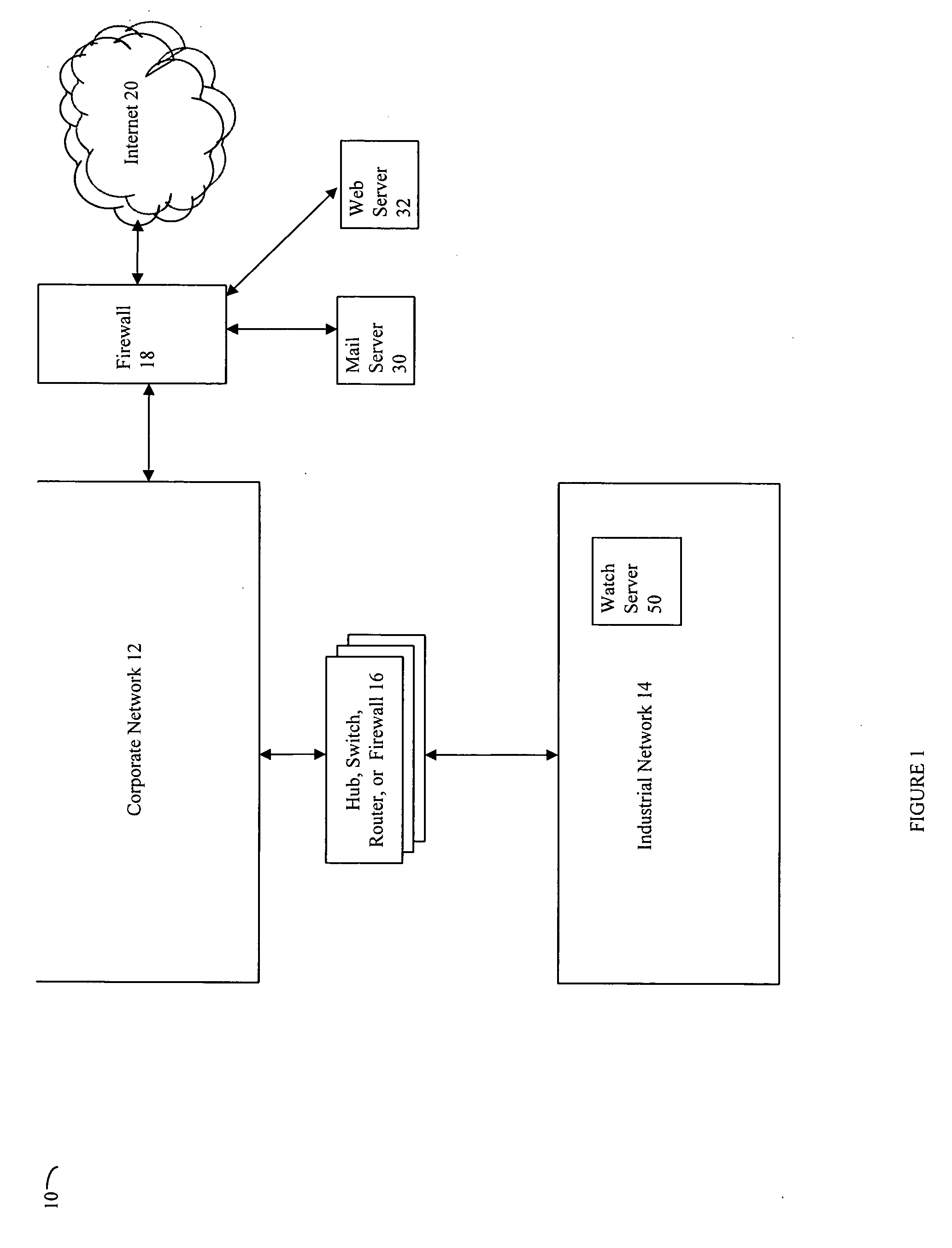Duration of alerts and scanning of large data stores
- Summary
- Abstract
- Description
- Claims
- Application Information
AI Technical Summary
Benefits of technology
Problems solved by technology
Method used
Image
Examples
embodiment 10
[0033] Referring now to FIG. 1, shown is an example of an embodiment 10 of the system that may be used in connection with techniques described herein. The system 10 may be part of an infrastructure used in connection with, for example, manufacturing, power generation, energy distribution, waste handling, transportation, telecommunications, water treatment, and the like. Included in the system 10 is a corporate network 12 connected through a hub, switch, router and / or firewall 16 to an industrial network 14. The corporate network 12 may be connected to one or more external networks such as the Internet 20 through a firewall 18 and / or other devices. Also connected to the corporate network 12, either directly or via the firewall 18, may be a mail server 30, a web server 32 and / or any one or more other hardware and / or software components.
[0034] It should be noted that although the system 10 of FIG. 1 includes a firewall 18 and may also include one or more other firewalls or security mea...
embodiment 12
[0042] Referring now to FIG. 2, shown is an example of an embodiment of components that may be included within a corporate network 12. Included in this embodiment 12 of FIG. 2 are user systems 40a-40b, and a hub, switch, firewall, or WAN router 42. The component 42 may be used in connecting this particular corporate network to one or more other corporate networks, to the firewall 18, and also to any other components included in 16 previously described in connection with FIG. 1.
[0043] Each of the user systems 40a-40b may include any one of a variety of different types of computer systems and components. Generally, in connection with computer systems included within the corporate network 12 as well as in connection with other components described herein, the processors may be any one of a variety of commercially available single or multi-processor systems such as, for example, an Intel-based processor, an IBM mainframe, or other type of processor able to support the incoming traffic a...
embodiment 100
[0047] Referring now to FIG. 3, shown is a more detailed example of an embodiment 100 of components previously described in connection with the system 10 of FIG. 1. Included in the industrial network 14 in one embodiment may be a process LAN 102, a control network 104, an I / O network 106, one or more other I / O networks 124a and 124b, and a Watch server 50. In this example, the industrial network 14 may be connected to the corporate network 12 by the hub, switch, router, or firewall 16. It should be noted that the industrial network 14 may include other components than as described herein as well as multiple instances of components described herein. In one embodiment, component 16 may be an integrated security appliance such as, for example, the Fortinet Fortigate appliance.
[0048] The process LAN 102 may be characterized as performing tasks in connection with data management, integration, display, and the like. The control network 104 may be used in connection with controlling the on...
PUM
 Login to View More
Login to View More Abstract
Description
Claims
Application Information
 Login to View More
Login to View More - R&D
- Intellectual Property
- Life Sciences
- Materials
- Tech Scout
- Unparalleled Data Quality
- Higher Quality Content
- 60% Fewer Hallucinations
Browse by: Latest US Patents, China's latest patents, Technical Efficacy Thesaurus, Application Domain, Technology Topic, Popular Technical Reports.
© 2025 PatSnap. All rights reserved.Legal|Privacy policy|Modern Slavery Act Transparency Statement|Sitemap|About US| Contact US: help@patsnap.com



